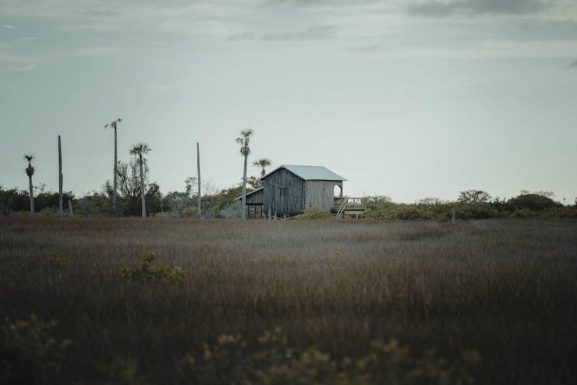This guide explores Florida’s diverse tree species, aiding enthusiasts and professionals in identifying native and non-native trees, crucial for conservation, landscaping, and environmental stewardship efforts across the state.
1.1 Overview of Tree Identification
Tree identification is the process of determining a tree’s species through its characteristics, such as leaves, bark, flowers, and seeds. In Florida, this skill is essential due to the state’s diverse flora, which includes both native and non-native species. Accurate identification helps in understanding ecological roles, conservation efforts, and landscape management. With tools like field guides and online resources, enthusiasts can learn to distinguish between species. Florida’s subtropical climate supports a wide variety of trees, making identification both challenging and rewarding. This guide provides a comprehensive approach to identifying Florida’s trees, emphasizing key features and practical tips for beginners and experts alike.
1.2 Importance of Tree Identification
Accurate tree identification is vital for environmental conservation, urban planning, and ecological balance in Florida. Identifying tree species helps in understanding their roles in ecosystems, such as providing habitats for wildlife and maintaining water quality. Proper identification also aids in managing invasive species, which can harm native flora and fauna. Additionally, it informs sustainable forestry practices and supports efforts to protect endangered trees. For homeowners and landscapers, knowing tree species ensures appropriate care and maintenance, enhancing their longevity and aesthetic value. Overall, tree identification is a cornerstone of responsible land stewardship and biodiversity preservation in Florida’s unique and fragile ecosystems.

1.3 Challenges in Florida’s Climate
Florida’s subtropical and tropical climate presents unique challenges for tree identification. High humidity, frequent rainfall, and intense sunlight support rapid plant growth but also promote the spread of invasive species. Hurricanes and storms can damage or uproot trees, altering their appearance and complicating identification. The state’s warm climate allows many non-native species to thrive, often mimicking native trees. Additionally, the evergreen nature of many Florida trees reduces seasonal variation in foliage, making identification based on leaf changes less effective. These factors require specialized knowledge and careful observation to accurately identify tree species in Florida’s diverse and dynamic environment.

Native vs. Non-Native Trees
Native trees naturally occur in Florida, supporting local ecosystems, while non-native species, often introduced by humans, can outcompete natives, disrupting habitats and requiring careful management.
2.1 Native Tree Species
Native tree species in Florida are those that naturally occur within the state, having evolved alongside its ecosystems. These trees play vital roles in supporting biodiversity and maintaining ecological balance. Examples include the iconic Sabal Palm (Sabal palmetto), Florida’s state tree, and the Live Oak (Quercus virginiana), known for its sprawling canopy. Native species like the Tulip Poplar (Liriodendron tulipifera) and Red Maple (Acer rubrum) are adapted to Florida’s climate and soil conditions, providing habitat and food for native wildlife. Their deep root systems also help stabilize soil and protect against erosion, making them essential for environmental health and resilience.
2.2 Non-Native and Invasive Species
Non-native tree species in Florida are those introduced by humans, often outcompeting native plants and disrupting ecosystems. Invasive species like the Australian Pine (Casuarina equisetifolia) and Melaleuca (Melaleuca quinquenervia) are particularly problematic. These trees spread rapidly, forming dense stands that shade out native vegetation and alter habitats. Australian Pine thrives in coastal areas, while Melaleuca dominates wetlands, both reducing biodiversity. Their aggressive growth and ability to tolerate harsh conditions make them difficult to control. Early detection and eradication are critical to managing these invasive species and protecting Florida’s natural ecosystems from further degradation.
Key Characteristics for Identification
Identifying Florida trees involves examining leaf structure, bark patterns, flowers, fruits, and seeds. These features help distinguish species and understand their ecological roles and climate adaptations.
- Leaf Structure: Simple, compound, lobed, or needle-like.
- Bark Patterns: Smooth, scaly, fissured, or peeling.
- Flowers/Fruits: Color, shape, and arrangement vary widely.
- Seeds: Pods, nuts, berries, or cones.
3.1 Leaf Structure and Types
Leaves are a critical feature for identifying Florida trees. They vary in shape, size, and arrangement, providing essential clues. Common types include simple leaves, which are single-bladed, and compound leaves, divided into multiple leaflets. Leaf margins can be entire, lobed, or toothed. Florida native species often exhibit adaptations to the subtropical climate, such as thick, waxy textures or narrow shapes to reduce water loss. Palmate leaves, like those of palmettos, and pinnate leaves, seen in some citrus species, are notable examples. Understanding these structures aids in distinguishing between native and invasive species, as well as identifying trees in urban and natural environments. Leaf venation patterns further enhance identification accuracy.
3.2 Bark Patterns and Textures
Bark patterns and textures are vital for identifying Florida trees, as they often remain constant throughout a tree’s life. Common types include smooth, scaly, furrowed, and peeling barks. For instance, cypress trees display fibrous, ridged bark, while magnolias have smooth, gray bark. Palm trees, like sabal palmetto, feature distinctive trunk patterns with visible leaf scars. Seasonal changes and environmental factors can alter bark appearance, but core characteristics remain consistent. Observing details like color, texture, and peeling habits helps distinguish species. This trait is especially useful when leaves or flowers are absent, making bark a reliable identifier for Florida’s diverse tree species.
3.3 Flower and Fruit Identification
Flowers and fruits are essential for identifying Florida trees, offering distinctive clues about species. Flowers vary in type, color, and arrangement; for instance, dogwood blooms are showy, while oak flowers are inconspicuous. Seasonal changes affect their presence, with some blooming in spring and others in summer or fall. Fruits also differ widely, from citrus like oranges to native species’ seed pods. Understanding fruit types, such as drupes or capsules, and their development from flowers aids identification. Observing pollinator attraction and fruiting patterns, along with other traits like leaves, enhances accuracy. Consulting field guides and experts can refine this process, essential for mastering tree identification in Florida’s diverse ecosystem.
3.4 Seed Characteristics
Seed characteristics are crucial for identifying Florida trees, as they vary significantly in size, shape, and structure; Seeds can be enclosed in fruits, like berries or pods, or exposed, as in cones. For example, cypress trees produce small, woody cones, while palms have large, hard seeds. Oaks yield acorns, a key identifier, while pines have seeds within their cones. Seed coats can be smooth, ridged, or hairy, aiding identification. Some seeds, like those of the sabal palm, are adapted to Florida’s wet environments, while others, like pine seeds, are designed for wind dispersal. Observing seed details, such as color and texture, enhances identification accuracy, especially in species with similar leaves or bark.
Common Tree Families in Florida
Florida hosts diverse tree families, including Pinaceae, Fagaceae, Arecaceae, Cupressaceae, and Sapindaceae, each playing vital roles in the state’s ecosystems and landscapes.
4.1 Pine Family (Pinaceae)
The Pine Family (Pinaceae) is prominent in Florida, with species like Slash Pine (Pinus elliottii) and Loblolly Pine (Pinus taeda) being widely distributed. These evergreen trees are easily identifiable by their needle-like leaves, which grow in bundles of two or three. Pines are adapted to various soil types, from sandy uplands to wet flatwoods. Their tall, straight trunks and broad canopies make them key components of many ecosystems. Pines are also vital for timber and wildlife habitat. However, they face challenges like pine beetles and fires, requiring careful management to maintain their ecological and economic value in Florida.
4.2 Oak Family (Fagaceae)

The Oak Family (Fagaceae) in Florida includes species like Laurel Oak (Quercus laurifolia) and Live Oak (Quercus virginiana). Oaks are known for their lobed or entire leaves and acorns, which are vital food sources for wildlife. Many Florida oaks are evergreen, such as the iconic Live Oak, which is recognized by its sprawling canopy. Others, like the Laurel Oak, are deciduous. Oaks thrive in diverse habitats, from wetlands to dry uplands, showcasing their adaptability. Their strength and longevity make them ecologically and culturally significant in Florida. Proper identification of oak species is essential for conservation and management in the state’s ecosystems.
4.3 Palm Family (Arecaceae)
The Palm Family (Arecaceae) is a prominent group in Florida, with native species like the Sabal Palm (Sabal palmetto) and non-native varieties such as the Royal Palm (Roystonea regia). Palms are easily recognizable due to their distinctive growth habits, with tall, columnar trunks and large, feathery or fan-shaped leaves. Many palms thrive in Florida’s subtropical climate, adapting to both coastal and inland environments. The Coconut Palm (Cocos nucifera) is widely cultivated but is not native to the state. Palms play a crucial role in Florida’s ecosystems, providing food and habitat for various wildlife. Their unique appearance and versatility make them popular in landscaping, though invasive species can pose challenges to native ecosystems.
4.4 Cypress Family (Cupressaceae)
The Cypress Family (Cupressaceae) includes several species native to Florida, such as the Bald Cypress (Taxodium distichum) and Red Cypress (Taxodium ascendens). These evergreen trees are known for their conical shapes and scale-like, flat leaves that form feathery branches. Bald Cypress is unique for its “knees,” protruding root structures in swampy environments. Cypress trees are highly adaptable, thriving in wetlands and well-drained soils. Their durable wood is prized for construction and furniture-making. In Florida, cypresses are ecologically vital, providing habitat for wildlife and stabilizing wetland ecosystems. They are also popular in landscaping for their ornamental value and ability to tolerate a wide range of conditions.
4.5 Maple Family (Sapindaceae)
The Maple Family (Sapindaceae) in Florida is represented by species like the Florida Maple (Acer saccharum subsp. floridanum). These deciduous trees are known for their distinctive palmate leaves, often with three to five lobes. Florida Maple thrives in the state’s northern regions, preferring well-drained soils. Its wood is highly valued for furniture and woodworking. In urban areas, maples are planted for their vibrant fall colors and shade. While not as common as other families in Florida, maples contribute to the state’s biodiversity and are popular in landscaping for their aesthetic appeal and ability to tolerate a range of conditions.

Trees by Ecosystem
Florida’s diverse ecosystems host unique tree species adapted to specific environments, from mangroves in coastal wetlands to cypress in swamps and hardwoods in urban landscapes.
5.1 Mangrove Trees
Mangrove trees dominate Florida’s coastal wetlands, thriving in salty, waterlogged soils. These unique trees are adapted to harsh marine conditions, with specialized root systems like pneumatophores that breathe air above water. The most common species in Florida are the Red Mangrove (Rhizophora mangle), Black Mangrove (Avicennia germinans), and White Mangrove (Laguncularia racemosa). Mangroves provide critical habitat for marine life, protect shorelines from erosion, and support biodiversity. Their tangled roots create nurseries for juvenile fish and shelter for birds. Mangroves are vital for coastal resilience, acting as natural barriers against storms and sea-level rise, making them indispensable to Florida’s ecosystem.
5.2 Trees of the Swamp Ecosystem
The swamp ecosystem in Florida is characterized by trees adapted to wet, low-oxygen conditions. Bald Cypress (Taxodium distichum) and Red Cypress (Taxodium ascendens) are prominent, with distinctive “knees” that protrude above the water surface, aiding in respiration. The Tupelo family, such as Water Tupelo (Nyssa aquatica), also thrives here. These trees play a crucial role in stabilizing soil and providing habitat for diverse wildlife. Their ability to endure prolonged flooding makes them vital for maintaining swamp ecosystems, which in turn support rich biodiversity and help mitigate flooding in surrounding areas.
5.3 Coastal Trees
Coastal trees in Florida are adapted to withstand harsh marine conditions, including high winds, salt spray, and periodic flooding. Mangroves, such as Red (Rhizophora mangle), Black (Avicennia germinans), and White (Laguncularia racemosa), dominate these areas, with specialized root systems that stabilize shorelines and provide habitat for marine life. The Sea Grape (Coccoloba uvifera), a shrub-like tree, thrives in beach dunes, while the Buttonwood (Cephalanthus occidentalis) is common in coastal wetlands. These trees are vital for shoreline protection, reducing erosion, and supporting biodiversity. Their adaptability to salty, nutrient-poor soils makes them indispensable in Florida’s coastal ecosystems, where they also serve as natural barriers against storms and tidal forces.
5;4 Urban Landscape Trees
Urban landscape trees in Florida are chosen for their beauty and resilience in a subtropical climate. Species like the Crape Myrtle (Lagerstroemia indica) and Southern Magnolia (Magnolia grandiflora) are popular for their vibrant flowers and evergreen foliage. The Laurel Oak (Quercus laurifolia) and Red Maple (Acer rubrum) offer shade and adaptability to urban conditions. The Bald Cypress (Taxodium distichum) adds unique character with its conical shape. These trees enhance urban aesthetics, provide shade, improve air quality, support local wildlife, and mitigate the heat island effect, making them integral to sustainable city planning.

Seasonal Changes and Growth Patterns
Florida’s subtropical climate influences tree growth patterns. Many native species remain evergreen, while others adapt with seasonal flowering and fruiting cycles, ensuring year-round biodiversity and ecosystem balance.
6.1 Evergreen Trees
Evergreen trees in Florida retain their foliage year-round, providing constant shade and habitat. Species like the Live Oak and Southern Magnolia thrive, adapting to the state’s warm, humid climate. These trees typically have broad, waxy, or needle-like leaves that resist water loss, ensuring survival in varying conditions. While they don’t shed leaves seasonally, some may drop old foliage as new growth emerges. Evergreen trees often dominate urban and natural landscapes, offering aesthetic and ecological benefits. Their consistent growth patterns make them ideal for landscaping, while their dense canopies support diverse wildlife. Understanding their adaptations is key to identifying and managing these resilient species effectively in Florida’s unique environment.
6.2 Deciduous Trees in Florida
Deciduous trees in Florida are less common due to the state’s subtropical climate, but species like the Florida Maple and Sweetgum thrive in specific regions. These trees shed their leaves seasonally, typically in fall or early winter, adapting to cooler temperatures. Unlike their northern counterparts, Florida’s deciduous trees often have shorter dormancy periods. Red Maple and Blackgum are examples that tolerate the state’s moist soils. While their growth patterns differ from evergreen species, deciduous trees contribute to biodiversity and seasonal beauty. Identifying them requires observing leaf shape, fall color, and shedding patterns, which vary slightly in Florida’s mild winters. Their adaptability makes them unique in the state’s diverse ecosystems.
6.3 Growth Patterns and Adaptations
Florida’s trees exhibit unique growth patterns and adaptations to thrive in its subtropical climate. Many species, such as the Laurel Oak and Red Maple, have adapted to the state’s warm, humid conditions by developing deep root systems to access water during droughts. Some trees, like the Cabbage Palm, grow slowly but are highly resilient to hurricanes and flooding. Seasonal changes influence growth cycles, with some species shedding leaves temporarily to conserve water. These adaptations enable trees to survive in diverse habitats, from swamps to coastal areas. Understanding these patterns aids in identification and highlights the remarkable resilience of Florida’s tree species in challenging environments.

Conservation and Management

Conservation and management are vital for protecting Florida’s tree species, ensuring ecosystem balance, and addressing climate change impacts; Sustainable practices help preserve native habitats and biodiversity.
7.1 Importance of Conservation
Conserving Florida’s trees is essential for maintaining biodiversity, supporting wildlife habitats, and preserving ecosystem services. Native trees play a critical role in stabilizing soil, filtering water, and mitigating climate change impacts. Urban trees also provide shade, improve air quality, and enhance community aesthetics. Protecting these resources ensures long-term environmental and economic benefits. Conservation efforts help prevent the loss of rare species and maintain ecological balance, especially in vulnerable ecosystems like mangroves and swamps. By prioritizing tree conservation, Florida can safeguard its natural heritage for future generations while addressing urbanization and climate challenges.
7.2 Sustainable Tree Management Practices
Sustainable tree management in Florida involves practices that promote tree health while protecting the environment. Planting native species adapted to local conditions ensures better survival rates and reduces pest risks. Regular pruning and maintenance help maintain tree structure and safety. Water conservation techniques, like using drought-tolerant species and efficient irrigation, are crucial in Florida’s climate. Organic mulching and composting enrich soil without harmful chemicals. Proper pest and disease control methods prevent overuse of pesticides. Managing invasive species prevents ecological disruption. These practices support biodiversity, enhance urban landscapes, and ensure long-term tree survival, benefiting both ecosystems and communities.

Common Pests and Diseases
Florida’s trees face threats from pests like aphids, borers, and scale, as well as diseases such as root rot and leaf spot, impacting health and stability.
8.1 Pests Affecting Florida Trees
Florida trees are susceptible to various pests, including the Asian longhorned beetle, emerald ash borer, and southern pine beetle. These insects weaken trees by boring into wood or feeding on foliage, leading to structural damage and reduced health. Soft scales, mealybugs, and aphids are common sap-feeders, excreting sticky honeydew that attracts sooty mold. Regular monitoring is essential for early detection, as infestations can spread rapidly in Florida’s warm climate. Identifying pests accurately is crucial for applying targeted treatments, such as insecticides or biological controls, to protect tree health and prevent ecosystem disruption.
- Asian longhorned beetle: Attacks hardwoods, creating large exit holes.
- Emerald ash borer: Devastates ash trees, causing branch dieback.
- Southern pine beetle: Affects pines, often leading to tree death.
- Soft scales and mealybugs: Damage by sap-feeding and promoting mold growth.
- Monitor trees for unusual holes, discoloration, or resin flow.
- Prune infested branches to slow pest spread.
- Use systemic insecticides for severe infestations.
8.2 Diseases in Florida Tree Species
Florida’s humid subtropical climate fosters various tree diseases, such as root rot, canker diseases, and leaf disorders. Root rot, often caused by fungi like Phytophthora, thrives in wet soils, damaging roots and leading to decline. Canker diseases, such as laurel wilt, infect the vascular system, causing bark lesions and branch death. Leaf diseases, including leaf spot and powdery mildew, weaken foliage and reduce photosynthesis. Sooty mold, though not a fungus, coats leaves in black residue, hindering light absorption. Early detection is critical for treatment, often involving fungicides, pruning, and improved drainage to prevent disease spread and protect tree health.
- Root rot: Affects roots in poorly drained soils.
- Canker diseases: Cause bark lesions and vascular damage.
- Leaf spot and powdery mildew: Impact foliage health.
- Sooty mold: Reduces photosynthesis by coating leaves.
- Inspect trees regularly for signs of disease.
- Improve soil drainage to prevent root rot.
- Prune infected branches to halt disease spread.
- Apply fungicides as needed for severe infections.

Tools and Resources
Florida tree identification uses field guides, online databases, and expert consultations. These tools offer detailed insights for accurate species recognition and effective tree management across diverse Florida ecosystems.
- Field guides
- Online databases
- Expert consultations
9.1 Field Guides for Identification
Field guides are essential tools for identifying Florida trees, providing detailed descriptions, images, and maps. They often include information on leaf structure, bark patterns, and fruit characteristics. Some popular guides, like The National Audubon Society Field Guide to Trees and Trees of Florida, cater specifically to the state’s diverse ecosystems. These resources help users distinguish native species from invasive ones and are useful for both casual observers and professional botanists. Many guides also focus on specific regions, such as South Florida or Central Florida, offering localized insights. They are invaluable for accurate tree identification and understanding the state’s botanical diversity.
- Color photos for visual identification
- Detailed descriptions of tree features
- Maps showing species distribution
9.2 Online Identification Tools
Online tools have revolutionized tree identification, offering accessible and interactive resources. Apps like iNaturalist and Leafsnap use AI and visual recognition to help identify species. Websites such as the Florida Forest Service and UF/IFAS provide detailed databases with images and descriptions. These platforms often include searchable databases, allowing users to filter by characteristics like leaf type or bark texture. Some tools even offer regional filters, focusing specifically on Florida’s ecosystems. They are particularly useful for beginners, combining scientific accuracy with user-friendly interfaces. Online tools bridge the gap between field guides and modern technology, making tree identification more accessible and efficient than ever.
- AI-powered identification apps
- Searchable databases with filters
- High-quality images and descriptions
- Regional specificity for Florida
9.3 Consulting Experts and Networks
Consulting experts and networks is a valuable approach for accurate tree identification. Organizations like the Florida Forest Service and University of Florida’s IFAS Extension offer expert advice. Local botanical gardens, arborists, and conservation groups also provide guidance. Joining online forums or professional networks, such as the Florida Native Plant Society, connects enthusiasts with specialists. These experts can identify trees based on photos, samples, or descriptions. On-site consultations and workshops are additional resources. Such networks are particularly helpful for rare or ambiguous species, ensuring accurate identification and fostering a community of learning and conservation. They bridge gaps in knowledge and promote sustainable practices;
- Expert consultations through organizations
- Local botanical gardens and arborists
- Online forums and professional networks
- On-site visits and educational workshops
Mastering tree identification in Florida enhances appreciation for its diverse ecosystems. Continuous learning and conservation efforts are vital for preserving these natural treasures. Keep exploring and learning!
10.1 Summary of Key Points
Identifying Florida’s trees involves understanding native and non-native species, key characteristics like leaves, bark, flowers, and seeds, and recognizing common families such as pines and oaks. Trees are adapted to diverse ecosystems, from mangroves to urban landscapes, and exhibit varied growth patterns. Seasonal changes and unique adaptations play crucial roles in their survival. Conservation efforts and managing pests and diseases are essential for maintaining healthy tree populations. Utilizing field guides, online tools, and expert consultations enhances identification accuracy. By mastering these elements, individuals can better appreciate and protect Florida’s rich arboreal diversity, fostering a deeper connection with its natural environment.
10.2 Encouragement for Further Learning
Continuing your journey in tree identification is a rewarding endeavor that deepens your connection with nature. Exploring beyond this guide, consider delving into specialized topics like botanical illustrations or advanced identification techniques; Join local workshops, botanical garden programs, or online courses to enhance your skills. Engaging with communities of naturalists and experts can provide invaluable insights and support. Remember, every tree tells a story, and mastering their identification is a lifelong adventure. By pursuing further learning, you not only enrich your knowledge but also contribute to the preservation and appreciation of Florida’s unique ecosystems for future generations.
